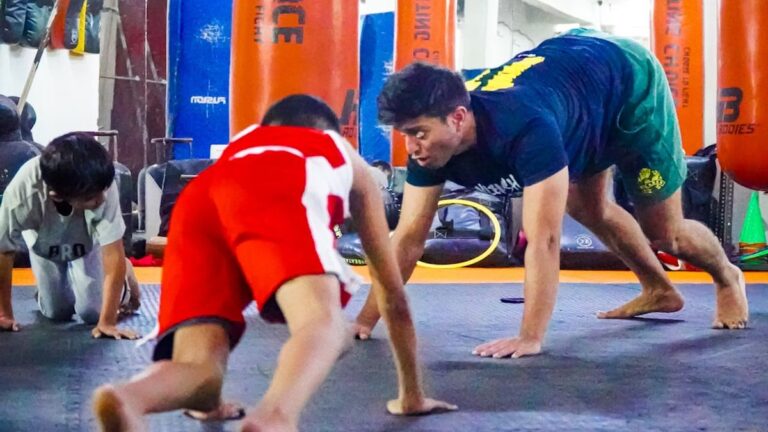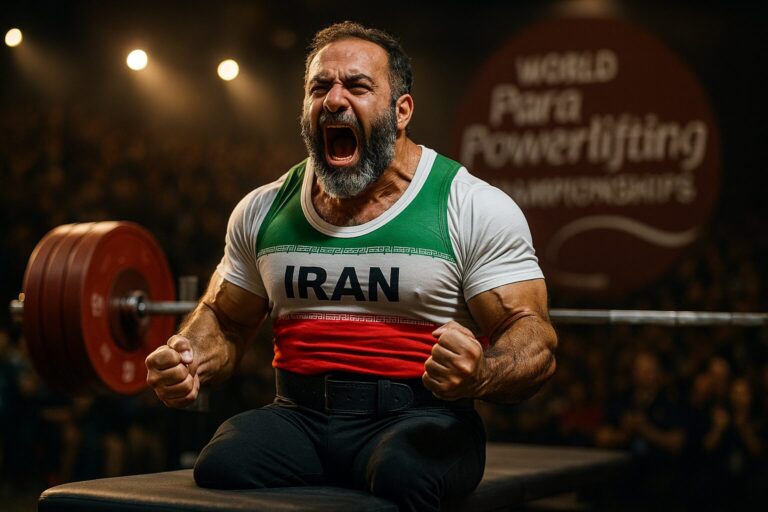Unleashing Potential Through Mindfulness in Athletic Training
In the high-octane world of sports, where physical prowess reigns supreme, the notion of mental training often takes a backseat. Yet, as many athletes and coaches are discovering, mindfulness—an ancient practice that emphasizes being present—can be a game-changer. It’s funny how, in a culture that idolizes strength and speed, we sometimes overlook the power of a calm mind. With the right mindset, athletes can unlock a wellspring of potential, transforming not only their performance but also their approach to competition and training.
What is Mindfulness?
Mindfulness is more than just a trendy buzzword thrown around in yoga classes. It’s a practice rooted in ancient meditation techniques, designed to cultivate awareness and focus. By training the mind to stay present, athletes can enhance their performance, reduce anxiety, and recover more effectively from injuries. While some might roll their eyes at the thought of sitting cross-legged and chanting “om,” the benefits of mindfulness can be profoundly practical.
In essence, mindfulness involves:
- Observation: Noticing thoughts and feelings without judgment.
- Attention: Focusing on the present moment, whether it’s during a training session or a competition.
- Acceptance: Embracing experiences as they come, rather than resisting them.
I remember the first time I tried mindfulness exercises before a big game— I was skeptical, thinking it was just a way to waste time. But lo and behold, I found myself more grounded and focused than ever before. It’s a little like finding the perfect pair of running shoes: it might feel weird at first, but once you find the right fit, everything just clicks.
The Science Behind Mindfulness in Sports
Research indicates that mindfulness can significantly impact athletic performance. A study published in the Journal of Sports Psychology found that athletes who practiced mindfulness reported lower levels of anxiety and improved focus during competitions. These findings are echoed by numerous other studies, suggesting that mindfulness practices can help athletes:
- Enhance concentration and decision-making skills.
- Lower stress levels and combat burnout.
- Facilitate faster recovery from injuries.
- Improve emotional regulation and resilience.
But let’s not get too bogged down in jargon. What does this really mean for the everyday athlete? Well, picture this: you’re standing at the starting line, heart racing, palms sweaty (cue the classic Eminem reference). In that moment, mindfulness can help you channel that nervous energy into focus, allowing you to perform at your best. It’s like having a mental coach in your back pocket—always ready to help you recalibrate and take a deep breath.
Practical Mindfulness Techniques for Athletes
So how can athletes incorporate mindfulness into their training? Here are some practical techniques that can be seamlessly integrated into a daily routine:
- Breathing Exercises: Simple yet effective, focusing on your breath for just a few minutes can help center your thoughts. Try inhaling deeply for four counts, holding for four, and exhaling for four. (It sounds simple, but oh boy, does it work wonders.)
- Body Scans: Take a few moments to mentally scan your body from head to toe, noticing any areas of tension. This practice helps you become more aware of your physical state, fostering relaxation.
- Visualization: Picture yourself succeeding in your sport—whether it’s sinking a free throw or crossing the finish line first. Visualization can enhance confidence and mental preparedness.
- Mindful Movement: Incorporate mindfulness into your physical training. Whether you’re running, swimming, or lifting weights, pay attention to how your body feels with each movement.
Of course, it’s not about doing all these things perfectly—(I mean, who really has the time?)—but finding what resonates with you is key. You might feel like a pretzel trying to find your zen moment at first, but with practice, it becomes more natural. Trust me; I’ve been there.
Real-World Applications
Mindfulness isn’t just for individual athletes; teams can also benefit from incorporating these practices into their training regimens. Take the Seattle Seahawks, for instance. Head coach Pete Carroll has long championed the use of mindfulness techniques to foster team cohesion and enhance performance. The team regularly engages in mindfulness exercises, and the results have been telling—several playoff appearances and a Super Bowl victory certainly bolster their credibility.
But it’s not just the pros. High school teams across the country are embracing mindfulness. Coaches report that their players exhibit better focus, communication, and teamwork. (And let’s be real—who wouldn’t want a more cohesive squad?)
Another case in point is the performance of Olympic athletes. Many have turned to mindfulness to cope with the immense pressure of competition. Gold medalist swimmer Michael Phelps has spoken about his use of visualization and breathing techniques to maintain focus and calm in high-stakes situations. If it works for someone like Phelps, it’s worth considering for anyone looking to improve their game.
Overcoming Skepticism
Now, let’s address the elephant in the room. Many athletes are skeptical about the effectiveness of mindfulness. “I’m here to lift weights, not sit in silence,” they might say. And I get it! Athletes thrive on action, not sitting still. But the truth is, mindfulness is not about replacing physical training; it complements it.
Think of it this way: if your mind is chaotic, it can undermine your physical training. Imagine running a marathon while your brain’s busy replaying every mistake you made that week—talk about a recipe for disaster! Mindfulness gives your mind the clarity it needs to support your physical efforts. It’s like oiling the gears of a well-oiled machine—everything runs smoother.
One approach to bridging this gap is through gradual integration. Start small—maybe just five minutes of focused breathing after a workout. Over time, you can build on that foundation and incorporate more mindfulness techniques. Think of it as adding an extra layer to your training regimen that can lead to long-term benefits.
Mindfulness and Injury Recovery
Injuries are an unfortunate reality for athletes, and the mental toll they take can be just as challenging as the physical pain. This is where mindfulness shines. Research indicates that mindfulness can significantly aid in recovery, helping athletes cope with the emotional challenges of being sidelined.
When an athlete focuses on their injury, they may spiral into negative thoughts—“Will I ever come back? Am I still the same player?” Mindfulness helps counteract these thoughts by redirecting attention to the present moment. It encourages acceptance of the situation, fostering a mindset that is conducive to healing.
For example, consider an athlete recovering from a knee injury. Instead of fixating on the timeline for return, mindfulness can guide them to focus on their rehabilitation exercises and what they can control—like maintaining a positive attitude and embracing gratitude for the small victories along the way.
Building a Mindfulness Routine
Creating a consistent mindfulness practice is key to reaping its benefits. The beauty of mindfulness is its flexibility; it doesn’t require a one-size-fits-all approach. Here’s a simple framework for establishing a routine:
- Set Aside Time: Carve out a few minutes each day dedicated to mindfulness—whether that’s morning, lunchtime, or right before bed.
- Find Your Space: Create a calm environment. It could be a quiet room, a corner of your gym, or even outdoors. (Fresh air can do wonders for your mindset.)
- Start Small: Begin with just a few minutes of focused breathing or a short body scan. Gradually increase the duration as you become more comfortable.
- Stay Consistent: Like training, consistency is critical. Aim to practice mindfulness daily, even if it’s just for a few minutes.
And most importantly, don’t be too hard on yourself. Some days, your mind may wander more than you’d like, and that’s perfectly okay. Mindfulness is a practice, not a performance. (Trust me, I’ve had my fair share of “wandering mind” days, and it’s all part of the journey.)
Mindfulness in Competitive Situations
As competition day approaches, athletes often experience an uptick in nerves. Enter mindfulness, your trusty sidekick in managing pre-game jitters. Many athletes find that practicing mindfulness just before competition helps them to center their thoughts and focus on the task at hand.
For instance, take a moment to observe how many elite athletes incorporate mindfulness techniques during warm-ups. Whether it’s a few deep breaths or a quick visualization of their performance, these practices help them channel their energy effectively. It’s like tuning an instrument before a concert—ensuring everything is in harmony before the big show.
In high-pressure situations, remember this: it’s not about suppressing your nerves but rather embracing them. Acknowledge those butterflies in your stomach and use them as fuel. Mindfulness allows you to transform anxiety into excitement, creating a powerful mental state that can enhance your performance.
The Road Ahead: Integrating Mindfulness into Athletic Culture
As mindfulness gains traction in the athletic community, it’s essential to foster an environment that encourages its practice. Coaches and trainers can play a pivotal role in normalizing mindfulness, integrating it into training sessions, and creating a culture where mental health is prioritized.
One way to do this is through workshops or team-building activities focused on mindfulness practices. This not only equips athletes with valuable tools but also encourages camaraderie and open discussion about mental health. Imagine a team huddled together, not just strategizing plays, but also sharing their experiences with mindfulness. It’s a powerful shift in the athletic landscape.
Moreover, as we continue to navigate the ever-evolving world of sports, the integration of mindfulness could reshape how we view athletic training. Instead of solely focusing on physical strength, we begin to recognize the importance of mental fortitude—the mental game that often makes the difference between winning and losing.
Conclusion: A Mindful Future in Sports
In a world that often prioritizes physical prowess above all else, it’s refreshing to see the growing recognition of mindfulness in athletic training. As athletes harness the power of a calm and focused mind, they are not only improving their performance but also cultivating resilience and emotional well-being.
As I reflect on my own experiences, it’s clear that the journey to mastering mindfulness is ongoing. Some days, I feel like a meditation guru; on others, I’m just trying to remember to breathe. But that’s the beauty of it—there’s no perfect way to practice mindfulness. It’s about progress, not perfection.
So whether you’re a seasoned pro, an aspiring athlete, or just someone looking to channel your inner zen, consider integrating mindfulness into your training regimen. You might just find that the key to unlocking your potential lies not in lifting heavier weights or running faster, but in quieting the mind and embracing the present moment. And who knows? You might even discover that the most powerful tool you have isn’t found in the gym but within yourself.













